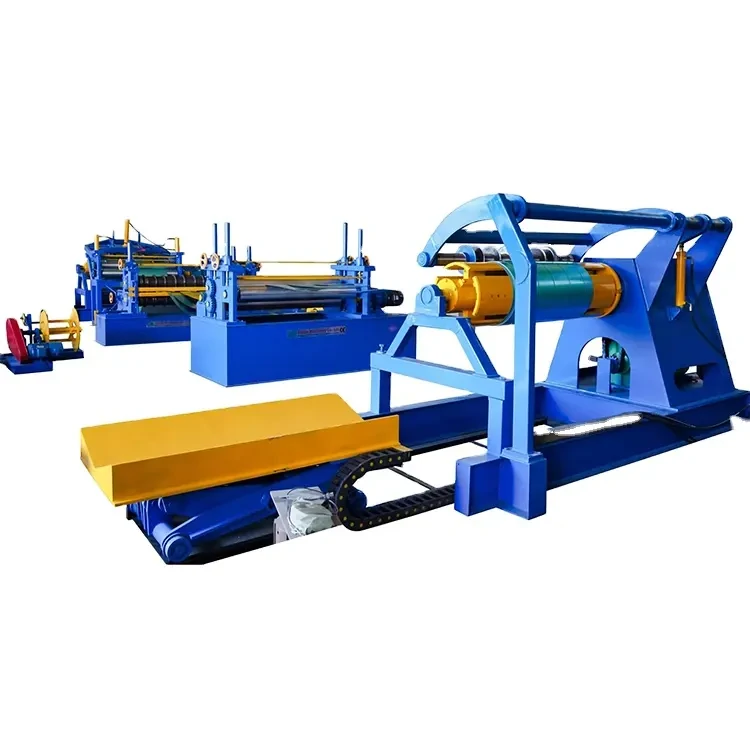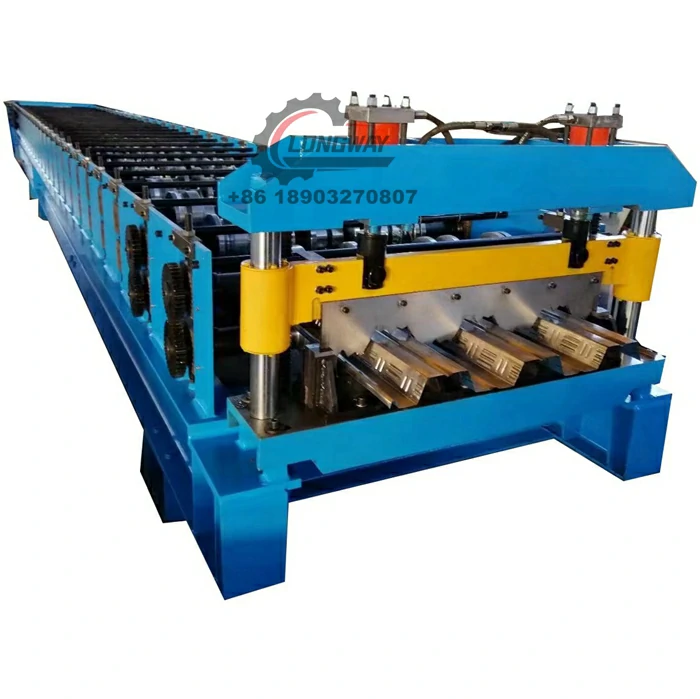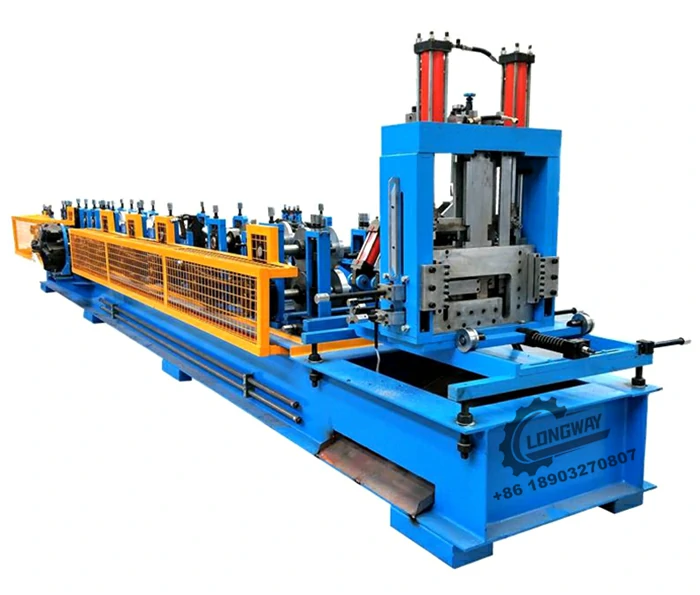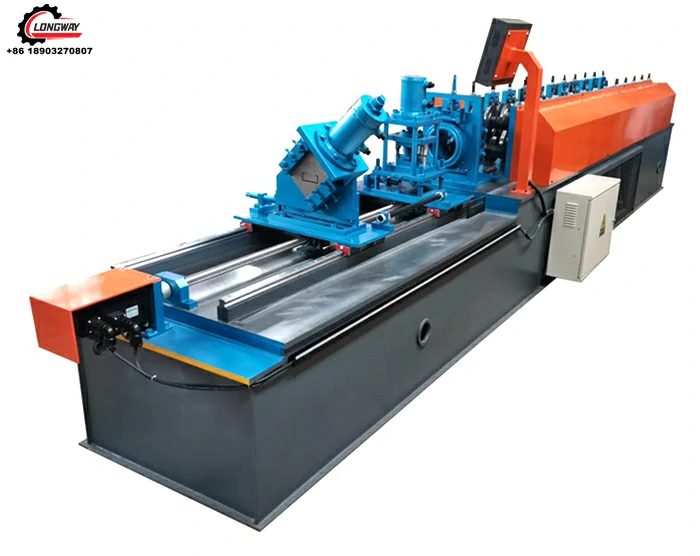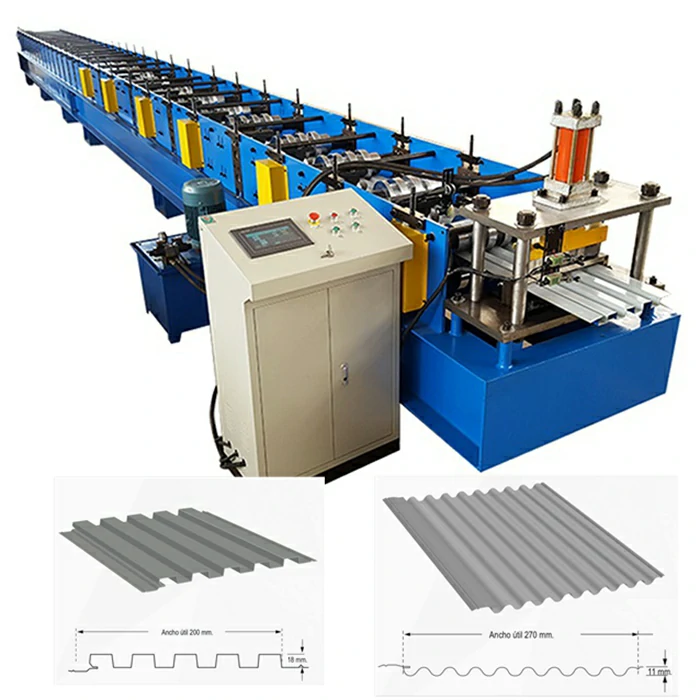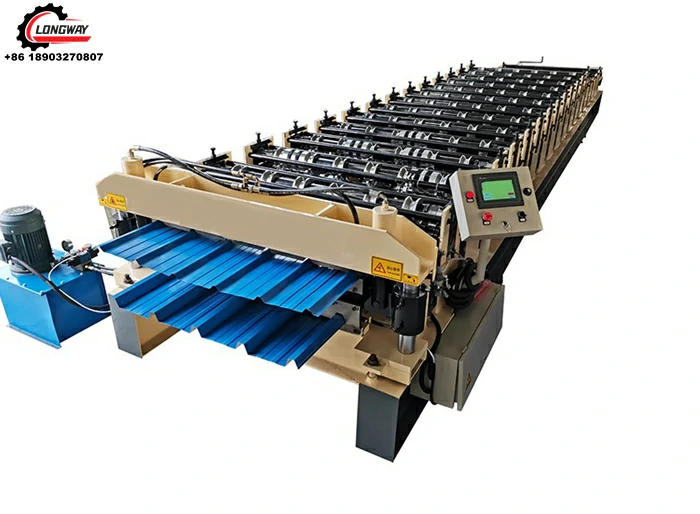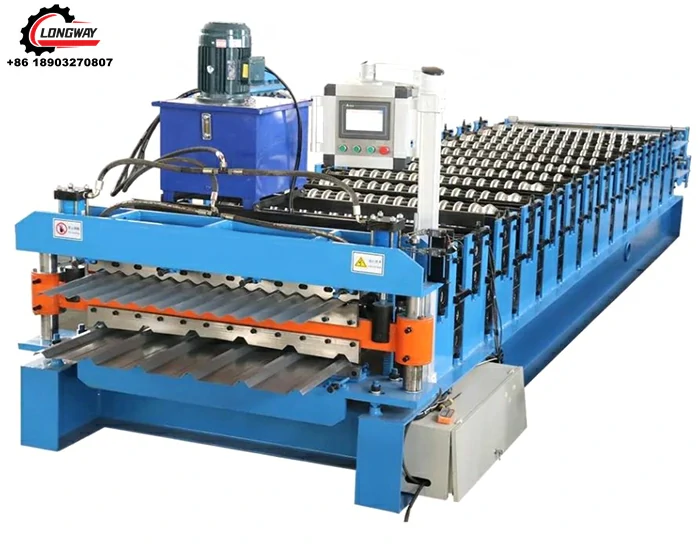The Role of Hydraulic Systems in Sheet Metal Slitters
Sheet metal slitters are workhorses in metal processing, slicing large coils into narrower strips for industries like construction and automotive. At the heart of these machines—whether a steel slitting machine, sheet metal slitter, or sheet metal slitting machine—lies the hydraulic system, a silent force that drives precision, power, and control. Cangzhou Longway International Trade Co., Ltd, a 12-year leader in cold roll forming and metal processing machines, integrates advanced hydraulic systems into their slitting lines, which handle materials like galvanized steel, carbon steel, and hot/cold-rolled coils. Trusted by 70+ global customers, their machines (capable of speeds up to 35 m/min) showcase how hydraulic power elevates slitting performance. This article explores how hydraulic systems shape the functionality of these slitters, making them indispensable in modern metal processing.
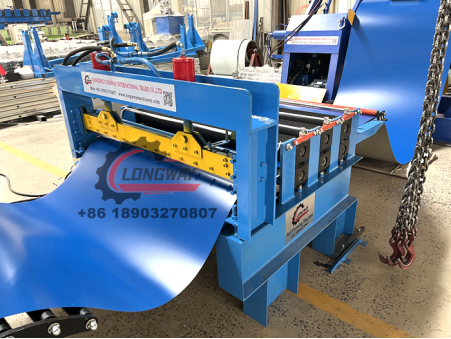
Hydraulic Force in Sheet Metal Slitter Cutting Mechanisms
- Precise Blade Pressure: The cutting blades in a sheet metal slitter rely on hydraulic pressure to slice through metal. Unlike mechanical systems, hydraulics deliver consistent force across the blade length, ensuring clean, burr-free cuts even in tough materials like thick carbon steel. Operators can fine-tune pressure based on material thickness, from thin gauge sheets to heavy-duty steel coils.
- Synchronized Slitting Action: In multi-blade sheet metal slitting machine setups, hydraulic systems coordinate blade movement, ensuring all blades engage and disengage simultaneously. This synchronization prevents uneven cuts or strip distortion, a must for producing strips of identical width—vital for industries with strict dimensional standards.
- Overload Protection: Hydraulic systems include safety valves that reduce pressure if the blades encounter unexpected resistance (like a thick spot in the coil). This protects the machine from damage and prevents blade breakage, extending tool life and avoiding costly repairs.
Comparing Hydraulic vs Mechanical Systems in Sheet Metal Slitting Machine
|
Feature |
Hydraulic System |
Mechanical System |
Hydraulic Advantage in Slitters |
|
Force Control |
Adjustable pressure for different materials. |
Fixed force, often too much/too little for varying metals. |
Ensures clean cuts in both thin and thick sheets with one machine. |
|
Speed Regulation |
Smooth acceleration/deceleration to match coil feeding. |
Jerky speed changes, risking material distortion. |
Maintains consistent slitting at speeds up to 35 m/min (as in Cangzhou Longway’s lines). |
|
Maintenance Needs |
Fewer moving parts; leaks are easy to detect. |
Many gears and linkages, prone to wear. |
Lower upkeep costs and less downtime for steel slitting machine operators. |
|
Safety |
Built-in overload valves prevent damage. |
Requires external safety devices. |
Reduces risk of blade or machine failure during operation. |
This table highlights why hydraulic systems are preferred in high-performance sheet metal slitting machine setups.
Hydraulic Systems Enhancing Sheet Metal Slitter Efficiency
- Integration with PLC Controls: Modern sheet metal slitter lines pair hydraulic systems with PLC (Programmable Logic Controller) technology. The PLC adjusts hydraulic pressure and speed based on preprogrammed settings (like strip width or material type), ensuring repeatable precision. Operators simply input parameters, and the system handles the rest—ideal for batch production.
- Energy Efficiency: Hydraulic systems in newer steel slitting machine models use variable-displacement pumps that consume power only when needed. This cuts energy costs compared to mechanical systems, which run at full power constantly—especially noticeable in machines operating 24/7.
- Reduced Manual Labor: Hydraulic automation minimizes manual adjustments. For example, blade positioning in a sheet metal slitting machine is done via hydraulic cylinders controlled by the PLC, eliminating the need for hand-cranking. This speeds up setup and reduces human error, making the machine accessible to less experienced operators.
Hydraulic Maintenance for Steel Slitting Machine Longevity
- Regular Fluid Checks: Hydraulic fluid in a steel slitting machine acts as both a lubricant and power transmitter. Checking fluid levels and quality (looking for contamination or degradation) prevents system clogs and ensures smooth operation. Cangzhou Longway recommends fluid changes every 6 months for heavy-use machines.
- Seal and Hose Inspections: Leaky seals or cracked hoses can reduce pressure and introduce air into the hydraulic system—leading to erratic blade movement. Inspecting these components monthly and replacing worn parts keeps the sheet metal slitter running at peak performance.
- Filter Replacement: Hydraulic filters trap debris that could damage valves or cylinders. Replacing filters as part of routine maintenance (typically every 3 months) protects the system, extending the life of critical components like the decoiler and cutting blades.
Sheet Metal Slitting Machine FAQS
Can a Sheet Metal Slitter With Hydraulic Systems Handle All Metal Types?
Yes! A sheet metal slitter with hydraulic controls adjusts pressure to handle diverse materials: galvanized steel, carbon steel, hot/cold-rolled coils, and even aluminum. The system’s adaptability makes it a versatile choice for metal processors working with mixed orders.
How Does Hydraulic Pressure Affect Slitting Speed in Steel Slitting Machine?
Hydraulic pressure and speed are balanced in a steel slitting machine: higher pressure (for thick metal) often pairs with slower speeds to ensure clean cuts, while lower pressure (for thin sheets) allows faster slitting (up to 35 m/min in top models). The PLC synchronizes these settings automatically.
Are Hydraulic Sheet Metal Slitting Machine More Expensive Than Mechanical Ones?
Initial costs are higher, but sheet metal slitting machine with hydraulic systems save money long-term. They reduce energy use, cut maintenance needs, and minimize scrap from poor cuts—making them cost-effective for most high-volume operations.
What Happens If Hydraulic Pressure Fails During Sheet Metal Slitter?
Modern sheet metal slitter systems include pressure sensors that trigger an emergency stop if pressure drops. This prevents damaged strips and protects blades. Most machines also have manual overrides to safely unload coils during a hydraulic failure.
Where Can I Find Steel Slitting Machine With Reliable Hydraulic Systems?
Cangzhou Longway International Trade Co., Ltd offers steel slitting machine and sheet metal slitting machine models with robust hydraulic systems, designed for durability and precision. Visit their website to explore technical specs, learn about maintenance, and find a slitting solution tailored to your metal processing needs.
-
Corrugated iron roofing sheet making machine with CE, AutoNewsNov.17, 2025
-
3mm Steel C U Channel Roll Forming Machine, Heavy DutyNewsNov.17, 2025
-
Calamima Micro Ondulada corrugated roof sheet machine - CNCNewsNov.17, 2025
-
Metal Roofing Roll Former for Sale Companies - Fast, PreciseNewsNov.17, 2025
-
Drywall Steel L Angle Bar forming machine | Fast, PreciseNewsNov.17, 2025
-
Corrugated Iron Roofing Sheet Making Machine, Fast & DurableNewsNov.11, 2025
-
Corrugated Metal Roofing Machine | High-Speed, Precise, CENewsNov.11, 2025
